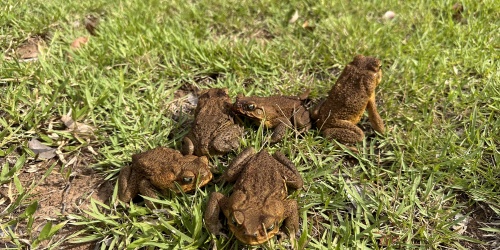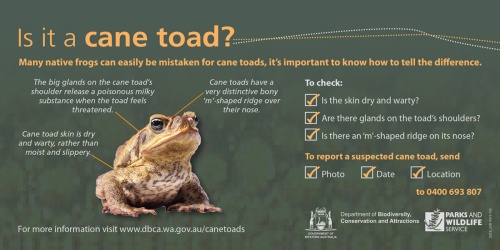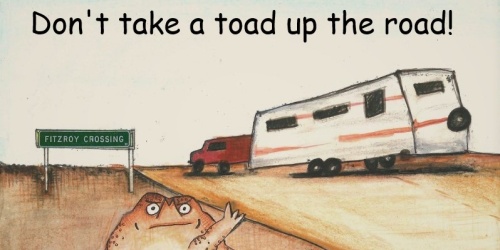
Cane Toad Community Involvement
Getting involved with community efforts to actively participate in the collection of cane toads, helps in two ways. Removing even a single cane toad can make a difference, as it eliminates the risk of an unsuspecting animal consuming and potentially dying from it. Secondly, through a process of humane killing, these collected toads are used to make baits for a unique project aimed at conditioning native animals to develop an aversion to the taste of cane toads. Mitigating the Impacts of Cane Toads on Native Animals.
Here’s how you can get involved:
Toad musters
DBCA hosts an annual toad muster in Kununurra every February. Volunteers are needed to catch as many toads as possible, which are then used to create cane toad sausages-like baits. These baits play a vital role in conditioned taste aversion training to help protect the northern quoll population. Keep an eye on DBCA’s Facebook page or email canetoad@dbca.wa.gov.au
Backyard tips to make your home a ‘Cane Toad Free Zone’
Here are some tips to discourage cane toads and keep your pets safe in your own backyard.
- Cover or bring in pet food at night as it attracts cane toads.
- Remove standing water.
- Remove rubbish and other debris so cane toads cannot shelter under it during the day.
- Keep your outside lights off when not needed. Cane toads like night-time lighting because it attracts insects for them to eat.
- Keep toads out by creating physical barriers. Cane toads are not good climbers and quite poor jumpers. Use a barrier made of a smooth material, like shade cloth, which is at least 50 cm high and secured into the ground to keep cane toads out of your yard.
Check you are identifying a cane toad correctly and use a humane way to dispose of them.





